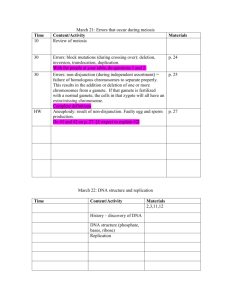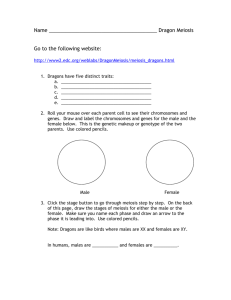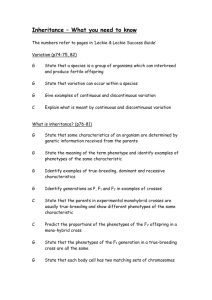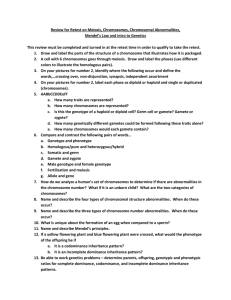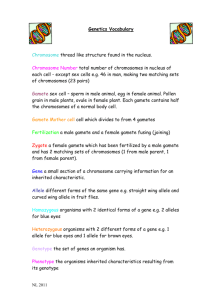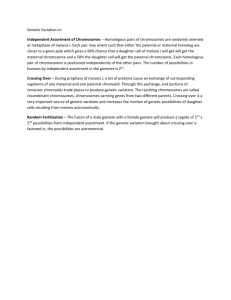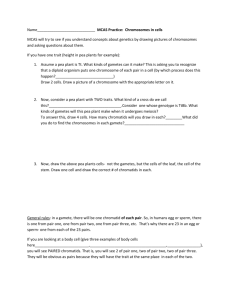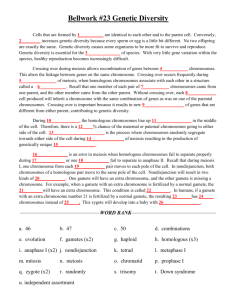reproduction and inheritance notes part 1
advertisement
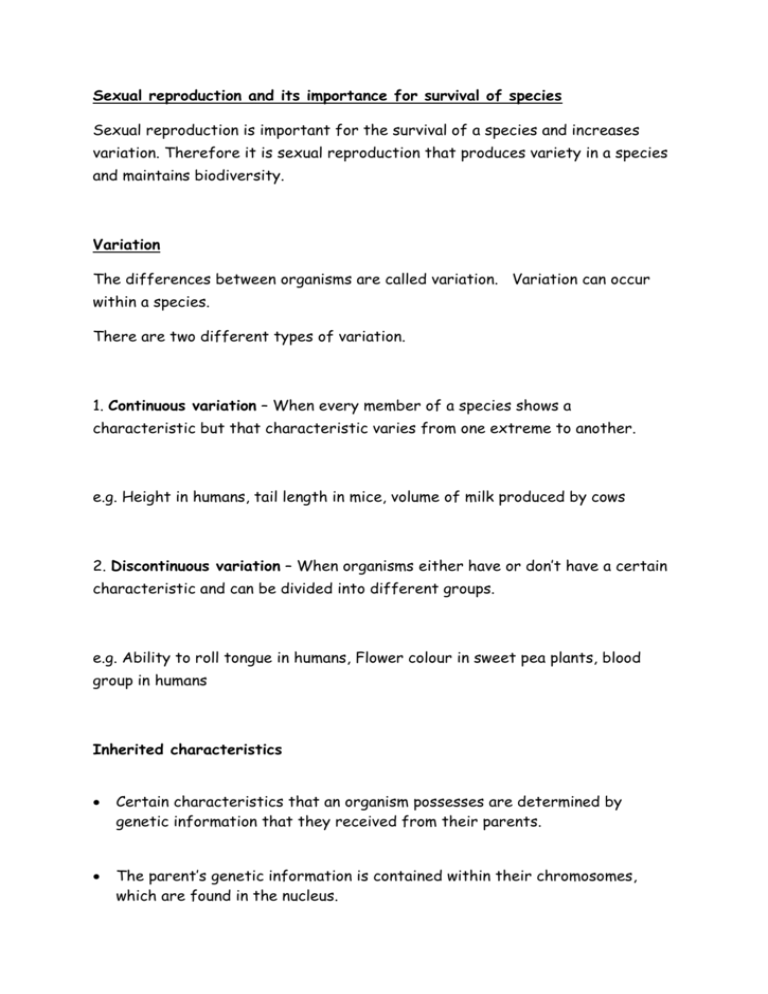
Sexual reproduction and its importance for survival of species Sexual reproduction is important for the survival of a species and increases variation. Therefore it is sexual reproduction that produces variety in a species and maintains biodiversity. Variation The differences between organisms are called variation. Variation can occur within a species. There are two different types of variation. 1. Continuous variation – When every member of a species shows a characteristic but that characteristic varies from one extreme to another. e.g. Height in humans, tail length in mice, volume of milk produced by cows 2. Discontinuous variation – When organisms either have or don’t have a certain characteristic and can be divided into different groups. e.g. Ability to roll tongue in humans, Flower colour in sweet pea plants, blood group in humans Inherited characteristics Certain characteristics that an organism possesses are determined by genetic information that they received from their parents. The parent’s genetic information is contained within their chromosomes, which are found in the nucleus. Every normal body cell contains a nucleus with two matching sets of chromosomes Genetic information is passed from parents to their offspring by sex cells in the process of fertilisation Sex cells Sex cells are known as gamete Male Female Gametes Name of male gamete Site of male gamete production Plant Pollen Animal Sperm Anther Testes Name of female gamete Site of female gamete production Ovule Ovule Ovary Ovary Gametes are formed from a gamete mother cell with two set of chromosomes (diploid). Gametes only possess one set of chromosomes (Haploid).
